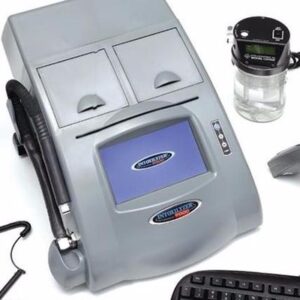
Understanding the science behind breath tests is critical to the successful defense of a DUI charge. The DUI defense team at the Tiftickjian Law Firm, P.C. has experience defending DUI charges involving breath tests. We can recognize and use to our advantage a number of errors that can occur.
Colorado law enforcement agencies currently use the Intoxilyzer® 9000 to test breath alcohol content. The Intoxilyzer® 9000 has five filters that are used to measure alcohol concentrations and to detect interfering substances. The I9000 model absorbs alcohol on a designated wavelength. The machine then uses an infra-red light source at one end of a tube-shaped sample chamber and an infra-red detector at the opposite end. When IR light is reflected through the sample chamber tube, a measurable amount of light passes through the tube and is captured at the other end of the tube by the infra-red detectors. The light energy captured is then converted to an electrical signal.
When a person blows into the breath testing machine, alcohol molecules that may be in the breath absorb some of the infra-red light as it passes through the sample chamber tube. This means that less infra-red light strikes the detector than before the breath with the alcohol molecules entered the sample chamber tube. The light measurement is also converted to an electrical signal, and is calculated by the breath test machine’s software and converted to a BAC that is given in conformance of grams of alcohol per 210 liters of breath.
A person’s BAC from a breath test is calculated using a partition ratio where blood-alcohol concentration is converted to breath alcohol concentration. The theory in breath testing is that there should be a proportional amount of alcohol in a person’s breath and the person’s blood. Breath testing machines, like the Intoxilyzer® 9000, convert at a partition ratio of 2100:1. However, this calculation does not take into account that each person is different both physically and chemically, and therefore assigning one number to account for all people is inherently fallible. We created a BAC Calculator to help estimate the number of drinks it would take for you to reach .08.
Although breath testing machines are relied upon by law enforcement agencies for evidence in DUI cases, these machines are susceptible to error like any other machine or device. For instance, the Intoxilyzer® 9000:
- may not have been properly certified as required by Colorado law;
- may not have been properly calibrated;
- results could have been caused by power fluctuations;
- results could be unreliable because of operator or police officer error;
- results could be unreliable because the observation period before the test may not have been conducted properly;
- could be producing false results because of high or low calibration issues;
- could have improperly operating chopper motors;
- could have bad or expired simulator solution;
- may not have been properly maintained as required by Colorado law.
Certain documents exist in every DUI case in which a breath test was completed that show whether breath test machine errors occurred and whether the machine and the operator have met the minimum requirements as set forth by Rule under 5 CCR 1005-2. An experienced DUI defense attorney knows how to request these documents and how to find errors, if they exist.
Therefore, if you are facing charges for DWAI, DUI, or DUI per se, and you took a breath test, it is in your best interest to contact an experienced Denver DUI defense lawyer who can help you navigate the complexities of Colorado DUI law and achieve the best possible result in your case. The Denver DUI attorneys at Tiftickjian Law Firm, P.C. are well trained in the defense of breath test DUI cases. If you have a pending Colorado DUI, give us a call or contact us through this site to schedule a consultation.
